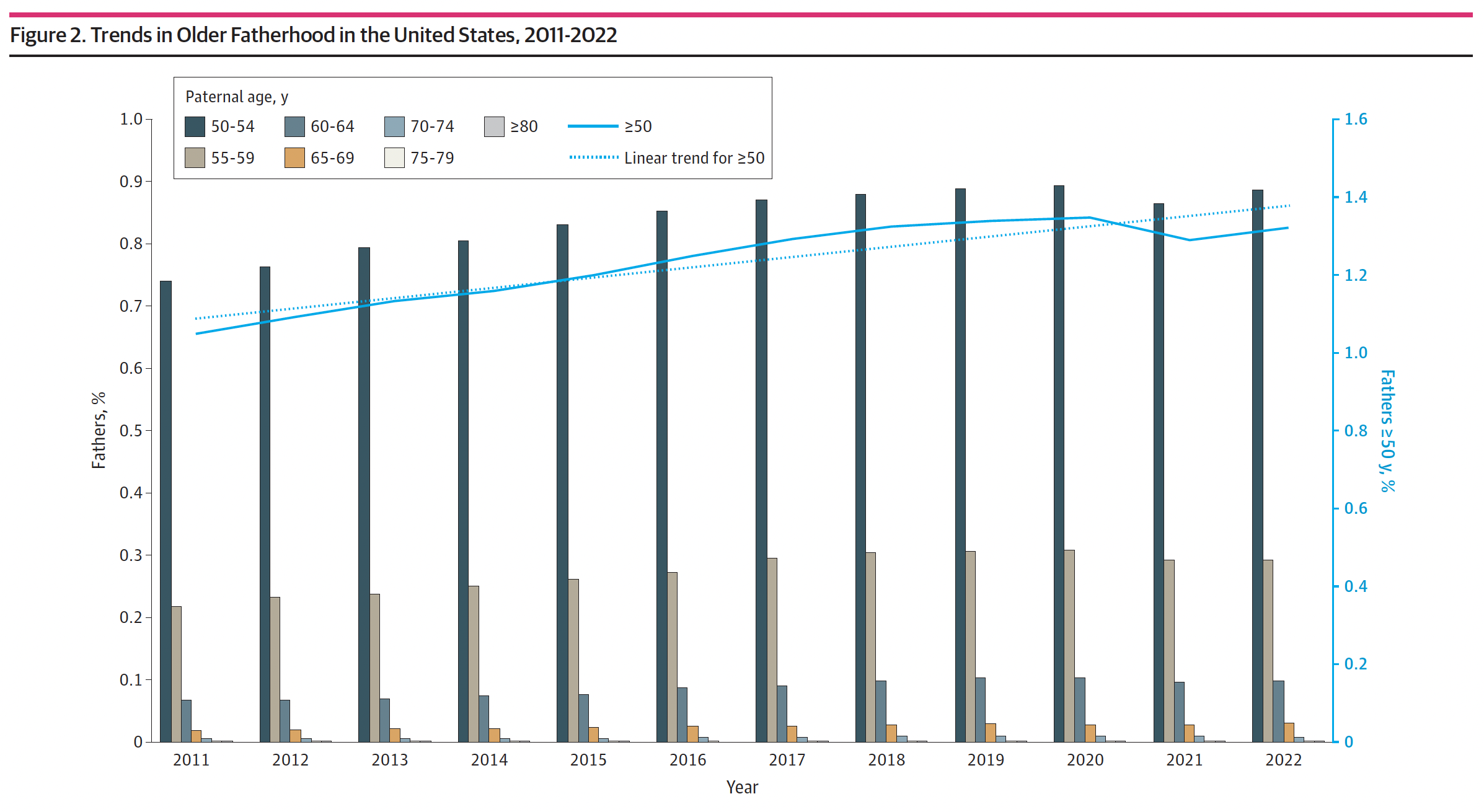Most need no reminder that motherhood is constrained by a biological clock – it's a fact that keeps many women awake at night, governs career and relationship choices, and contributes a lion's share to the US$819 million IVF industry.
But mature fatherhood comes with its own risks, and a new study finds the proportion of US fathers aged 50 or older at the time of their child's birth is on the rise, meaning more children are likely to be impacted.
The reasons for this trend are unclear, but Stanford University urologist Albert Ha and colleagues note it's often attributed to "diminished concerns of the male 'biological clock' and the desire for educational and financial stability prior to starting a family."
"Previous studies have also highlighted the influence of evolving gender norms that promote active parental involvement while emphasizing traditional roles like the male 'breadwinner'," the authors add.
In a world where the focus is usually squarely on the mother, the researchers are concerned that public awareness of these "modest but significant" risks associated with advanced paternal age (APA) is lacking.
A 2018 study identified many of the risks of mature fatherhood, using data from 2007 to 2016 for more than 40 million live births in the US.
The data revealed that babies born to fathers over the age of 35 were at higher risk for adverse outcomes like low birth weight, seizures, and breathing problems immediately after birth.
And the older a father was, the greater the risk – for a man aged 45 years or older, his baby was 14 percent more likely to be born prematurely, and for a man aged 50 or older, his child was 28 percent more at risk of being admitted to neonatal intensive care.
Ha and colleagues analyzed the more than 46 million live births reported in the US from 2011 to 2022. Their cross-sectional study highlights that the proportion of US families affected by these risks is rising as more men opt in to parenthood at a mature age.
The average paternal age rose steadily from 30.8 years in 2011 to 32.1 years in 2022, and the proportion of births involving fathers aged 50 or older increased from 1.1 percent in 2011 to 1.3 percent in 2022. It's a small but significant uptick.

"Recent socioeconomic and demographic trends have shifted the timeline for family building in the US, with many couples increasingly delaying parenthood," Ha and colleagues write.
Even after controlling for maternal age and other factors, every 10-year increase in the father's age increased the proportion of births that relied on assisted reproductive technology (ART). It was also associated with a higher likelihood of being the mother's first birth, and an increased risk of preterm birth and low birth weight compared to fathers aged 30 to 39.
"Paternal age has also affected fertility, pregnancy trajectory, and child health," the authors write.
"Age-related conditions, such as erectile dysfunction and hypogonadism, impair paternal fecundity, while older age is associated with decreased semen volume, motility, and morphology."
Research has also linked older paternal age to declines in sperm quality, meaning the squiggly little gene packets that contribute half of a baby's DNA are more likely to be affected by DNA fragmentation, abnormal chromosome numbers, new mutations, and epigenetic alterations.
"Overall, the accumulation of alterations in older men may increase the risk of conditions like autism, pediatric cancers, achondroplasia, and schizophrenia; decrease likelihood of ART success; and heighten risk of perinatal complications," the authors write.
There were no significant differences found in infant sex ratio based on a father's age, except among fathers aged 70 years or older, who were more likely to have a female baby.
Ultimately, the research highlights the need for better awareness of the risks of mature fatherhood, and further investigation into the factors driving this societal shift.
This research is published by JAMA Network Open.
